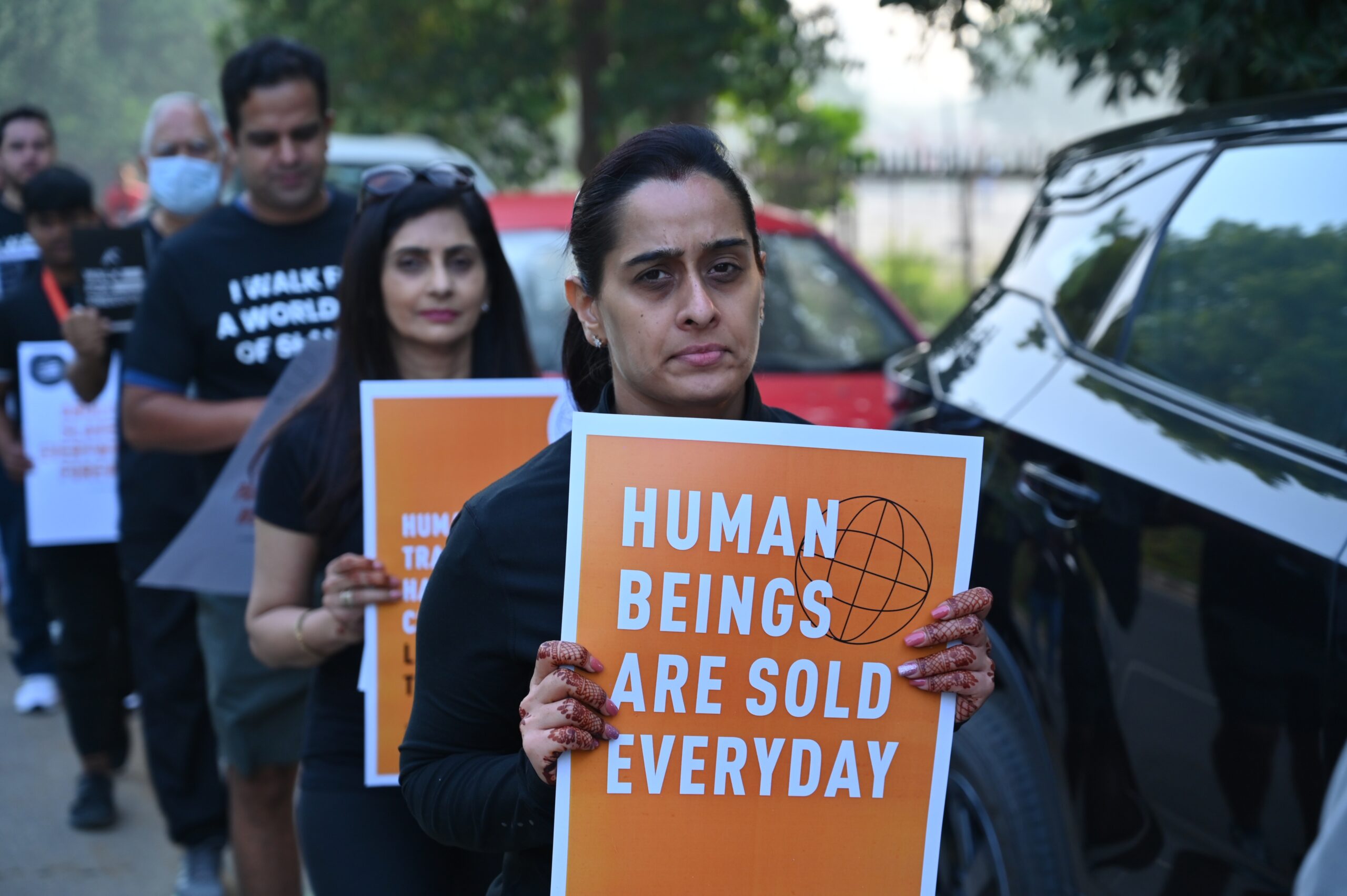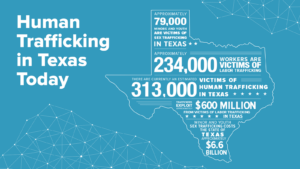The Truth about Human Trafficking: Exposing Common Misconceptions
Written by Emily Arismendy
Human trafficking and exploitation are crimes that violate basic human rights and continue to plague societies worldwide. Despite its widespread occurrence, human trafficking remains a subject clouded with misconceptions. Trafficking targets the vulnerable, entrapping them in a web of abuse, forced labor, and sexual exploitation. It’s crucial to pierce through the fog of misinformation to comprehend the true scale and complexities of this issue.
Beyond the sensationalized portrayals in the media, the reality of human trafficking is multifaceted. Victims can be men, women, or children, falling prey to traffickers who exploit their vulnerabilities. Contrary to popular belief, trafficking is not limited to cross-border movement; it thrives within national boundaries as well. This crime thrives in the shadows, often involving traffickers known to their victims, further obscuring the true extent of the problem.
By arming ourselves with accurate information and understanding, we can collectively contribute to combating this modern-day slavery. Additionally, our efforts will help foster a world where every individual’s rights are safeguarded.
Common misconceptions
Misconception 1: Human Trafficking Only Involves Cross-Border Movement
Reality: While cross-border trafficking does exist, a significant portion of human trafficking occurs within a country’s borders. Domestic trafficking involves the recruitment, transportation, and exploitation of victims within their own country. According to the International Labor Organization (ILO), over 77% of human trafficking victims are exploited within their country of residence. This shows that the issue is not just an international problem but a local concern as well.
Misconception 2: Human Trafficking Involves Only Women and Children
Reality: Human trafficking indeed affects women and children disproportionately, with women accounting for about 49% and girls 23% of victims globally, according to the United Nations Office on Drugs and Crime (UNODC). However, men and boys are not immune to this crime. They make up a significant portion of trafficking victims, with men comprising approximately 21% and boys 7% of the total number of victims (UNODC). By overlooking male victims, we risk ignoring an essential aspect of human trafficking and hamper efforts to assist all victims regardless of gender.
Misconception 3: Traffickers Kidnap Most Victims
Reality: Traffickers do not primarily employ kidnappings, contrary to portrayals in popular media. Instead, they lure most victims through fraudulent job offers, deceptive recruitment practices, or false promises of a better life. Poverty, vulnerability, and lack of awareness make people susceptible to these schemes. For instance, the ILO reported that 58% of trafficking victims fall prey to forced labor due to deceptive recruitment tactics.
“Human Trafficking is not the cookie-cutter image of young girls in lingerie posted up on corners or walking down a ‘track’ or ‘blade’. It occurs literally everywhere people are present. Kids are trafficked at night and still show up to school the next day; it occurs in the projects as well as the suburbs. Traffickers can be partners, parents or family members, or friends. It’s not just a Black man who is decked out in gold chains and diamond rings.” – SAFE CARES Advocate
Misconception 4: Human Trafficking is Only Related to Sexual Exploitation
Reality: Sexual exploitation is undoubtedly a significant component of human trafficking, making up about 59% of all trafficking cases (UNODC). However, it is essential to recognize that human trafficking encompasses various forms of exploitation. This includes forced labor, bonded labor, forced begging, child soldiers, and organ trafficking. These non-sexual forms of exploitation are just as brutal and demand equal attention and concern.
Misconception 5: Human Trafficking is a Problem Only in Developing Countries
Reality: Human trafficking exists worldwide, cutting across geographic, economic, and cultural boundaries. Developing countries do face significant challenges due to poverty and weak legal frameworks. However, the issue of human trafficking is not exempt from developed nations. The Global Slavery Index estimated that around 9.2 million people are living in modern slavery in developed countries as of 2021. Traffickers exploit vulnerable populations everywhere, underscoring the universal nature of this problem.
Misconception 6: Victims of Human Trafficking Will Seek Help and Report their Situation
Reality: Victims of human trafficking often face immense physical and psychological coercion. They endure manipulation and threats, which prevent them from seeking help or reporting their situations to authorities. Fear of retaliation against themselves or their families, as well as a lack of trust in law enforcement, add to the obstacles they encounter. Language barriers and the uncertainty of finding safety and support further hinder victims from coming forward. This underlines the need for improved victim identification and protection measures. However, for the few brave souls that are willing and able to come forward, we want to be there for them. Our mission is to ensure they have the support and resources necessary to reclaim and rebuild their lives.
More information about trafficking
Human Trafficking in Texas
Texas is a major hub for human trafficking in the United States due to its size, geographic location, and large immigrant population.
- According to the Texas Human Trafficking Resource Center, the state ranks second in the nation for the number of reported cases of human trafficking.
- The most common type of human trafficking reported in Texas is sex trafficking, where individuals, often minors, are forced into prostitution or sexual exploitation.
- Labor trafficking is also prevalent in Texas, with victims being forced to work under exploitative conditions in various industries such as agriculture, construction, and domestic servitude.
- The average age of entry into sex trafficking in Texas is 13 years old, highlighting the vulnerability of young children and teenagers.
- Many trafficking victims in Texas are U.S. citizens, although a significant number are also foreign nationals brought into the country illegally or on fraudulent pretenses.
- The Interstate 10 corridor running through Texas is known as the “superhighway” for human trafficking due to its use by traffickers to transport victims across state lines.
Human trafficking and exploitation represent a dark reality that thrives on ignorance and misconceptions. By dispelling these myths and misconceptions, we pave the way for a more informed and effective response to combat this global issue. It is vital to work together, as governments, organizations, communities, and individuals, to create awareness, strengthen legislation, improve victim protection, and eliminate the root causes of human trafficking. Only through collective efforts can we bring an end to this harrowing crime and create a safer and more just world for all.
Additional resources:
Partners Against Child Trafficking (PACT)
The National Human Trafficking Hotline
—
If you are in need of any SAFE services, the free, confidential SAFEline can be reached at 512.267.SAFE (7233), or toll free at 1-877-384-9891. Chatline can be reached at www.safeaustin.org/chat. Textline can be reached at 1-737-888-7233. Hotline, chatline and textline are available 24/7.
